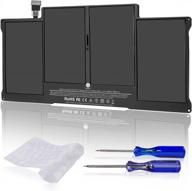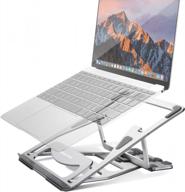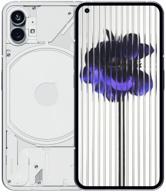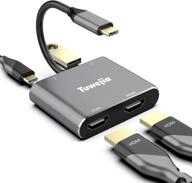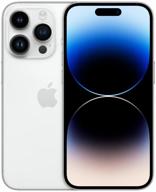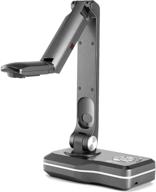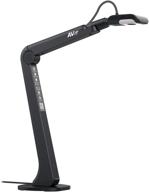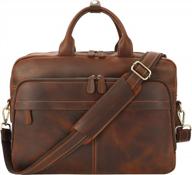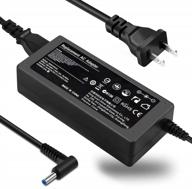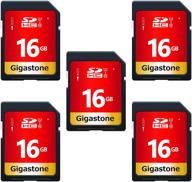Top products in 🖨️ Scanners & Accessories
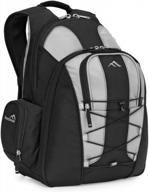

34 Review

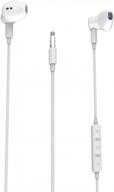

37 Review

Choosing the Right Scanner for Your Needs
With so many scanner options on the market, it can be tricky to select the right model for your specific needs. The key is to think about what you will primarily use the scanner for before shopping around.
What Will You Scan?
First, consider what types of originals you need to digitize. Do you mainly need to scan:
- Documents like receipts, forms, letters, etc.
- Photographs
- Books or magazines
- 3D objects
If you only need to scan standard office documents, a budget flatbed or sheetfed scanner will suffice. For scanning lots of photos, slides, or film negatives, you'll want a model with high resolution and the ability to handle delicate originals well. Large format scanners are best for digitizing newspapers, folded documents, and book pages without damaging bindings.
Scanner Types
The most common scanner types are:
- Flatbed scanners: Allow scanning of documents, photos, books, and other items by placing them on a flat glass surface. Great versatility.
- Sheetfed scanners: Compact units that quickly feed single sheets through for scanning. Ideal for high volume document digitizing.
- Photo scanners: Specialized for scanning slides, negatives, photos. Offer high resolution and color depth.
- Portable scanners: Lightweight, battery powered models. Scan on the go with mobile devices.
- 3D scanners: Use technologies like lasers to capture detailed 3D data on real objects. Used for 3D modeling, VR, and more.
Key Features to Consider
No matter what type of scanner you choose, be sure to evaluate the following features:
- Resolution: Measured in DPI (dots per inch). Higher resolution means more detail captured. 600+ dpi is ideal for photos; 300 dpi works for documents.
- Bit depth: The color depth, measured in bits. 24-bit provides the most accurate color reproduction.
- Speed: Measured in pages per minute. Faster speeds of 30+ ppm let you digitize high volumes quickly.
- File support: Check what output file types are supported, like JPG, PDF, searchable PDF, etc.
Also look for built-in features like double-sided scanning, WiFi connectivity for mobile devices, automatic document feeders to scan stacks fast, and more.
Shopping Tips
Follow these tips when evaluating scanners:
- Read reviews from independent sources to see real user experiences.
- Compare prices both online and locally to find the best deals.
- Look up the scanner's recommended daily duty cycle to ensure durability.
- Make sure bundled software has the tools you need, or is compatible with your preferred programs.
- Consider extended warranties for heavy use or business applications.
Take the time to assess how you plan to use your scanner, then choose a model with the right mix of features, reliability, and value for your needs. The right scanner helps you go paperless and securely back up important documents, photos, and other irreplaceable originals.
Similar products
What Will You Use Your Scanner For?
Before purchasing a scanner, think about what types of originals you need to digitize. This will help determine what scanner features and capabilities are most important for your needs.
Scanning Documents
If you mainly need to scan documents like:
- Letters
- Receipts
- Forms
- Invoices
- Records
- Reports
Then a standard flatbed or sheetfed document scanner will likely meet your needs. Look for fast scan speeds, automatic document feeders, and bundled document management software. Built-in OCR for converting scans into searchable formats is also highly recommended.
Scanning Photos
For scanning photographic originals like:
- Loose prints
- Negatives
- Slides
You'll want a scanner optimized for photos. These provide very high resolution, excellent color depth, and gentle/precise feeds to prevent damage. Specialized film/slide scanners are ideal for negatives. Look for dust and scratch removal capabilities as well.
Another interesting products
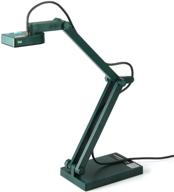

3 Review

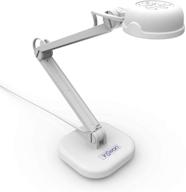

3 Review

Scanning Books or Magazines
Digitizing book pages, magazines, or other bound documents requires a larger flatbed scanner. Look for models that can accommodate items up to 11"x17" or larger. Binding correction features will straighten scanned pages automatically. Larger formats also work for scanning oversized documents like maps, blueprints or fragile items.
Think about your unique scanning needs, then choose a scanner with the right features and technology to digitize your materials accurately while staying within budget.
Flatbed vs. Sheetfed Scanners
When choosing a scanner, two of the main options are flatbed and sheetfed designs. Which one is right for you? Here's an overview of the key differences.
Flatbed Scanners
Flatbed scanners have a large flat glass plate where you place your document or photo to be scanned. They can accommodate a wide variety of originals:
- Loose sheets of paper
- Pages from books or magazines
- Photographs
- Documents up to legal size
- 3D objects (with enough clearance underneath)
Benefits of flatbed scanners include:
- Versatility for scanning diverse media
- Ability to handle thick books and fragile items
- Full control over item positioning
Limitations include slower scan speeds and lack of portability due to their larger size.
Sheetfed Scanners
Sheetfed scanners feed single sheets through the scanner automatically for fast digitizing. Original pages/photos are inserted into the input tray and passed through the scanning mechanism.
These scanners excel at high volume document digitizing. Benefits include:
- Much faster scan speeds, around 25-30 pages per minute
- Compact size
- Automatic document feeding
- Great for processing stacks of paper
The tradeoff is that sheetfed scanners have limited media support. Most only handle standard letter or legal sized sheets.
Choosing the Right Scanner
If you need to digitize stacks of regular documents, a sheetfed scanner offers speed and automation. For mixed media like photos, books, and odd-sized originals, a versatile flatbed model is your best bet.
Look for scanners that give you the best of both worlds. Many flatbeds also offer an automatic document feeder attachment for scanning document stacks when needed.
Resolution and Scanning Speed
When shopping for a scanner, two key specifications to consider are resolution and scanning speed.
Resolution
Resolution determines how much detail a scanner can capture from original photos or documents. It is measured in DPI - dots per inch.
- Higher resolution means more dots are captured per inch, resulting in more detail and sharper images.
- Typical resolutions for consumer scanners range from 300 dpi to 600 dpi and higher.
Recommended minimum resolutions:
- Documents: 300 dpi
- Photographs: 600 dpi
Higher resolutions take longer to scan and result in larger file sizes. Balance resolution with your scanning needs - avoid excessively high resolutions unless necessary.
Scanning Speed
Scanning speed determines how quickly a scanner can digitize materials. It is measured in pages per minute (ppm).
- Faster scan speeds are more efficient for high volume scanning.
- Typical ppm rates range from 10 ppm for flatbeds to over 25 ppm for sheetfed scanners.
To maximize speed:
- Use sheetfed scanners for stacks of documents.
- Enable faster scan settings in scanner software.
- Use lower resolutions when acceptable.
Balance speed with quality - extremely fast speeds can sacrifice accuracy and detail. Optimize settings for the materials being scanned.
Finding the Right Balance
Consider both resolution and speed specifications when selecting a scanner. Your needs will determine the ideal balance between image quality and efficiency.
Automatic Document Feeders
An automatic document feeder (ADF) is an extremely useful scanner accessory for digitizing stacks of pages quickly and efficiently.
How ADFs Work
ADFs work by automatically pulling single sheets from the input tray, feeding them through the scanner one-by-one, then depositing the scanned pages in an output tray.
- ADFs can scan one or both sides of each page.
- The input tray capacity ranges from 20 to 100+ pages depending on model.
- ADFs support standard office document sizes like letter or legal.
This automated process allows you to scan multi-page documents or entire stacks rapidly without having to place each page manually.
Benefits of ADFs
ADFs offer many advantages:
- Faster scanning - 25 to 90 pages per minute typically.
- Efficient digitization of document stacks.
- Hands-free scanning saves time.
- Consistent scans without positioning errors.
Any scanner used frequently for digitizing documents will benefit from an ADF attachment.
What to Look For
When evaluating ADFs, look for:
- Duplex (two-sided) scanning capability.
- High page per minute scan rates.
- Jam detection sensors.
- Large page capacity input tray.
- Straight or U-turn paper path options.
Make sure the ADF can handle the standard paper sizes and weights you need to digitize.
Enhancing Efficiency
Adding an automatic document feeder accessory to your scanner saves significant time when archiving stacks of documents or forms. Look for models with fast speeds, high capacities, and durable construction for everyday use.
Software Bundled with Scanners
When purchasing a scanner, the included software is an important consideration. The bundled software determines what features you can use and how easily you can manage scanned files.
Scanner Drivers
All scanners include a TWAIN or WIA driver to allow scanning directly from Windows applications. This basic driver lets you initiate scans and make limited adjustments like resolution and color mode.
Scanner Utilities
Many scanners also come with the manufacturer's own scanner utility software. These utilities provide additional useful tools such as:
- Previewing scans
- Cropping and rotating
- Adjusting color balance
- Removing imperfections
- Configuring scan profiles
Look for utilities that make common scanning tasks easier and improve quality.
OCR and Document Management
Higher-end scanners frequently bundle more advanced programs such as:
- OCR software - For converting scans into searchable and editable formats.
- Document management programs - For organizing digital files and extracting metadata.
- PDF editors - For modifying and annotating scanned PDFs.
Such software can significantly enhance your scanning capabilities but may add to the scanner's cost.
Compatibility
When evaluating bundled software, check that it is compatible with:
- Your computer's operating system
- Your preferred file formats and programs
- Cloud storage platforms you use
Choosing a scanner with bundled software that integrates well into your existing workflow can improve efficiency.
Top Scanners Under $100
You don't have to spend a lot to get a decent scanner. Here are some of the best scanners available for under $100.
Canon CanoScan LiDE300
This lightweight Canon LiDE flatbed scanner scans up to letter-size at up to 4800 x 4800 dpi. It can digitize documents, photos, magazines, and other media via the intuitive Canon scanning software. The LiDE300 offers impressive image quality for the price.
Epson WorkForce ES-50
The ES-50 is a portable sheetfed document scanner with speeds up to 25 ppm. It has a 50 page capacity and scans directly to the cloud for easy digitizing. The compact size and built-in battery make it ideal for scanning on-the-go.
Brother ADS-1700W
Brother's ADS-1700W is a feature-packed wireless scanner with an ADF and speeds up to 40 ppm. It supports wireless and USB connectivity, two-sided scanning, and integration with popular cloud services. The 2.7" display lets you edit scans before saving.
HP ScanJet Pro 2500 f1
This flatbed scanner handles up to letter size at 1200 dpi optical resolution. The included document management software helps optimize scanned files. An optional auto document feeder is available for increased efficiency.
Epson FastFoto FF-680W
Designed for photographers, the FastFoto FF-680W scans photos incredibly fast - just 1 second per 4x6" print. It can batch scan stacks of prints, slides, and polaroids easily and includes image correction features.
Doxie Go SE
This rechargeable portable scanner simplifies scanning on-the-go. It's lightweight, wireless, and can scan full color pages directly to the cloud, your devices, or included SD card. The integrated kickstand aids portability.
While basic, sub-$100 scanners lack some features of pricier models, they can still serve most home office digitizing needs. Evaluate your scanning requirements and choose an affordable model with the key features you need.
Magic Wand Vupoint Scanner Instructions
Here are the instructions for using the Magic Wand VuPoint Scanner:
- Install two AA alkaline batteries by sliding the battery door down the bottom half of the long dimension of the unit from below the Power/Scan key.
- Press and hold the "Power/Scan" key for two seconds to turn on the scanner.
- Insert a microSD card into the slot on the side of the scanner above the recessed Format button. Slide the card in metal side up. The card latches when you hear it click in position6.
- Place the scanner on a flat surface and press the power/scan button to start scanning. Choose from three resolution settings up to 900 dpi and create either JPEG files or PDFs6.
- When finished, press the power/scan button again to stop scanning6.
- To turn off the scanner, press and hold the power/scan button.
- To view your scanned files, download the software included for editing and archiving scans.
Vupoint Solutions
The Magic Wand VuPoint Scanner is a portable handheld scanner that can scan virtually anything. Here are some instructions for using the scanner:





